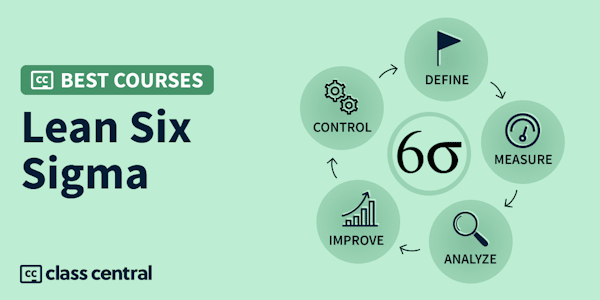Class Central Tips
The course is designed for Lean Six Sigma professionals to excel in the American Society for Quality (ASQ) Certified Six Sigma Green Belt (CSSGB) exam. The course focuses specifically on the first two phases of the define, measure, analyze, improve, and control (DMAIC) framework. In the define phase, you will learn to define a problem statement and project scope, whereas in the measure phase, you will learn about effective data collection strategies and measurement system analysis (MSA).
By the end of this course, you will be able to:
- Define specific, measurable, achievable, relevant, and time-bound (SMART) project goals and objectives.
- Analyze the voice of the customer (VOC) data to translate it to critical to quality (CTQ) parameters.
- Explain process mapping and define key performance metrics.
- Plan data collection activities to quantify the performance of the process.
The course is best suited for individuals who analyze and solve quality problems and work on quality improvement projects. It is recommended that you complete the first course in the ASQ-Certified Six Sigma Green Belt Exam Prep Specialization, Overview: Six Sigma and the Organization, before starting this course.




